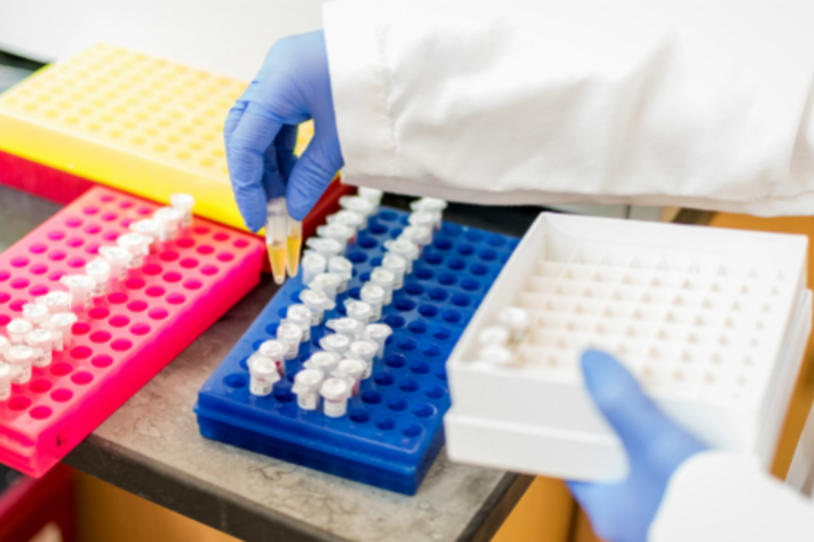
Our landmark observational clinical study, the Parkinson’s Progression Markers Initiative (PPMI), will reach its 10-year mark next year. Since its launch in 2010, the study has built the largest biosample library in Parkinson’s disease by collecting clinical data from 1,400 participants at 33 clinical sites around the world.
PPMI makes its robust dataset available to qualified researchers worldwide. As of this month, PPMI’s data has been downloaded more than 5 million times. This milestone represents how valuable the dataset really is — it’s helping researchers search for clues that can help better define, measure and treat Parkinson’s disease (PD).
Here are recent findings and initiatives emerging from PPMI.
An Invaluable Data Partnership
Last month, the Accelerating Medicines Partnership Parkinson’s disease (AMP PD) program announced the launch of the AMP PD Knowledge Portal. It contains harmonized data from four studies, including PPMI, which laid the groundwork for the portal and makes up 37% of the data on it. The portal will allow researchers to compare data across studies, leading to more insights that could accelerate breakthroughs in Parkinson’s treatments. Researchers can apply for access to the Knowledge Portal on the AMP PD website.
Early Indicators of Disease
Recent data analysis from PPMI investigators, funded by The Michael J. Fox Foundation, was published in The Lancet Neurology and featured in Reuters Health. It demonstrated that people with LRRK2 and GBA mutations but without a PD diagnosis (non-manifesting carriers) may show signs of disease before symptoms begin. Measuring these changes could help predict who might develop the disease and potentially test preventive therapies.
Investigators compared the baseline clinical and dopamine transporter (DaT) scan results of 208 LRRK2 and 184 GBA non-manifesting carriers to those of 194 control volunteers. In PPMI, DaTscans — imaging tests that measure dopamine in the brain — are performed before motor symptoms start, at diagnosis and over time.
Among the 286 participants with DaTscan results, 11% of LRRK2 and 3% of GBA non-manifesting carriers had a DaT deficit, signifying dopamine loss.
In addition, compared with control volunteers, those participants with gene mutations scored significantly higher on the Movement Disorders Society Unified Parkinson's Disease Rating Scale (MDS-UPDRS), which measures PD symptoms.
In Reuters Health, Dr. Simuni said, "Clinicians should encourage people who know they carry a PD risk mutation — or who may, based on family history — to get involved in research. We're seeing subtle symptoms in these folks before diagnosis or even significant dopamine loss. Perhaps in the near future we'll be testing therapies to stop Parkinson's before it advances to a 'diagnosable' state."
Biomarkers to Predict Cognitive Decline
Scientists also aim to predict specific Parkinson’s symptoms to better understand biology and to develop and test new treatments. One of the largest areas of need — for patients as well — is understanding risk of memory and thinking problems associated with Parkinson’s disease.
A study featured in Scientific Reports, one of Nature’s scientific journals, looked at 269 PPMI participants who were diagnosed with idiopathic PD — in which the cause is unknown — within two years before their first screening visit and who showed evidence of dopamine deficiency.
The researchers used 19 commonly evaluated clinical and pathological measures — such as hormones in blood plasma, dopamine deficiency via DaTscans, age, years of education, and past or present depression and/or anxiety — to develop a formula for predicting cognitive decline among people with PD.
They found that the variables that predicted mild-to-moderate and severe cognitive decline were significantly different. Milder decline was linked to levels of the amyloid-beta protein in spinal fluid, advanced age and score on a cognitive test. For severe decline, baseline levels of spinal fluid proteins (tau, amyloid-beta, alpha-synuclein) were most telling.
Identifying these kinds of differences can help scientists learn more about the disease process and focus on specific treatments. The article in Nature indicated, “This will aid with the development of effective targeted treatments and clinical trials.”
PPMI continues to collect and analyze data and samples from its dedicated community of participants toward new PD understanding, measures and treatments. The study is also planning for an expansion in 2020, building on its valued infrastructure to increase the study population and the impact of PPMI.
